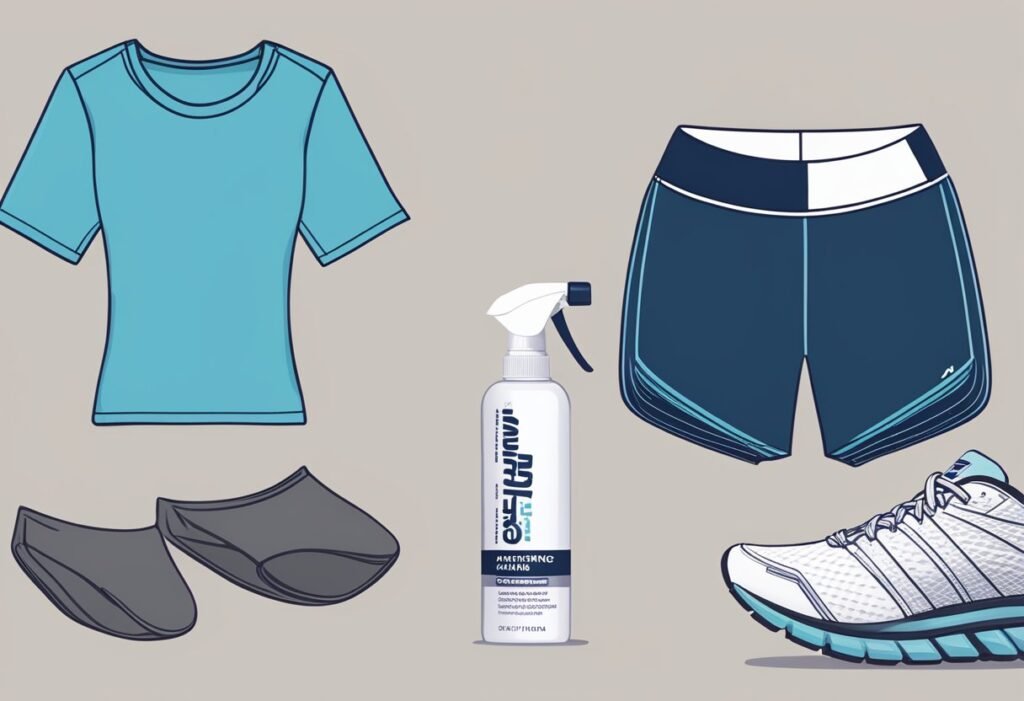How can I prevent chafing while wearing running shorts
Chafing is a common problem faced by runners, especially when wearing running shorts. The friction caused by the shorts rubbing against the skin can lead to redness, irritation, and even painful blisters. While chafing can be uncomfortable, there are several steps that runners can take to prevent it from happening.
One of the most effective ways to prevent chafing while wearing running shorts is to choose the right fabric. Look for shorts made from moisture-wicking materials that will help to keep you dry and reduce friction. Avoid cotton, which can trap moisture and increase the risk of chafing. Additionally, consider shorts with flat seams or no seams at all to minimize rubbing against the skin.
Understanding Chafing
Chafing is a common problem among runners, particularly when wearing running shorts. It is caused by the repeated rubbing of skin against skin or clothing, which can lead to irritation, redness, and even blisters. Understanding the causes and common areas affected by chafing can help runners prevent this uncomfortable and painful condition.
Causes of Chafing
Chafing can be caused by a variety of factors, including friction, moisture, and heat. When skin rubs against skin or clothing, it can create friction that irritates the skin and causes chafing. Moisture can also contribute to chafing, as wet skin is more susceptible to friction and irritation. Heat can exacerbate the problem, as it can cause sweat to accumulate and make skin more prone to chafing.
Common Areas Affected
Chafing can occur in a variety of areas, but there are some common areas that are particularly susceptible. These include the inner thighs, groin, buttocks, nipples, and underarms. These areas are prone to chafing because they often experience friction and moisture during physical activity. Runners who wear shorts that are too tight or too loose may also be more prone to chafing, as the fabric can rub against the skin and cause irritation.
To prevent chafing while wearing running shorts, runners should choose shorts that fit well and are made from moisture-wicking materials. They should also consider applying a lubricant, such as petroleum jelly or anti-chafing balms, to areas that are prone to chafing. Additionally, wearing moisture-wicking underwear can help prevent chafing in the groin area. By taking these steps, runners can avoid the discomfort and pain associated with chafing and enjoy their runs to the fullest.
Choosing the Right Running Shorts
When it comes to preventing chafing while running, choosing the right running shorts can make all the difference. Here are some things to consider when selecting your running shorts.
Material Considerations
The material of your running shorts can greatly affect your comfort level during your runs. Look for shorts made from moisture-wicking materials, such as polyester or spandex, which can help keep you dry and prevent chafing. Avoid cotton, as it tends to retain moisture and can cause friction against your skin.
Another material consideration is the presence of seams. Look for shorts with flatlock seams, which are less likely to rub against your skin and cause chafing. Some shorts also have seamless designs, which can be even more comfortable.
Fit and Style
In addition to material, the fit and style of your running shorts can also impact your comfort and chafing prevention. Look for shorts that fit snugly but not too tight, as excess fabric can cause friction against your skin.
Consider the length of the shorts as well. Longer shorts can provide more coverage and reduce friction between your thighs, while shorter shorts can offer more freedom of movement.
Lastly, consider the style of the shorts. Some runners prefer compression shorts, which can provide added support and reduce muscle fatigue. Others may prefer looser, more relaxed styles. Ultimately, the best choice will depend on your personal preferences and needs.
By considering these material, fit, and style factors, you can choose running shorts that will help prevent chafing and keep you comfortable during your runs.
Preventative Measures
Chafing can be a painful and uncomfortable experience for runners, but there are several preventative measures that can be taken to avoid it.
Proper Hygiene
Maintaining proper hygiene is essential in preventing chafing. Showering immediately after a run and changing into clean, dry clothes can help reduce friction and irritation. It is also important to wear clean and dry running shorts to prevent the buildup of sweat and bacteria that can exacerbate chafing.
Lubrication and Barrier Methods
Lubrication and barrier methods can also be effective in preventing chafing. Applying a lubricant such as petroleum jelly or anti-chafing balm to areas prone to chafing can reduce friction and irritation. Some runners also find success in using barrier methods such as band-aids or athletic tape to protect sensitive areas.
It is important to note that not all methods work for everyone, and it may take some trial and error to find the best preventative measures for individual needs. Additionally, it is important to listen to your body and take a break if chafing does occur to allow time for healing.
Additional Protective Gear
When it comes to preventing chafing while wearing running shorts, additional protective gear can make a big difference. Here are a few options to consider:
Compression Garments
Compression garments can be worn underneath running shorts to reduce friction and prevent chafing. These garments are designed to fit snugly against the skin, providing support and reducing muscle fatigue. They also wick away moisture, which can help prevent skin irritation.
Compression shorts, tights, and calf sleeves are all popular options for runners. Look for garments made from breathable, moisture-wicking materials like polyester or nylon. Some compression garments also feature flatlock seams, which can reduce chafing even further.
Specialized Undergarments
Specialized undergarments can also help prevent chafing while running. Look for underwear made from moisture-wicking materials like nylon or polyester. Some brands offer underwear specifically designed for runners, with features like seamless construction and mesh panels for ventilation.
For women, sports bras can also be a source of chafing. Look for bras with flat seams and moisture-wicking materials. Some brands also offer bras with adjustable straps and back closures, which can help ensure a comfortable, customized fit.
Overall, adding compression garments and specialized undergarments to your running wardrobe can help prevent chafing and make your runs more comfortable.
Aftercare and Treatment
Immediate Actions Post-Run
After a run, it’s important to take immediate action to prevent chafing from getting worse. Here are some steps to follow:
- Clean the affected area with mild soap and water. This helps to remove sweat and bacteria that can further irritate the skin.
- Apply a moisturizer or anti-chafing balm to the affected area. This can soothe the skin and create a barrier between your skin and clothing to prevent further chafing.
- If the chafing is severe, consider applying a hydrocortisone cream to reduce inflammation and itching.
Long-Term Skin Care Strategies
In addition to immediate actions, there are also long-term strategies that can help prevent chafing in the future:
- Choose the right running shorts. Look for shorts that are made from moisture-wicking materials and have a smooth, seamless design. Avoid shorts with rough seams or tags that can rub against your skin.
- Wear compression shorts or underwear. Compression shorts can help to reduce friction between your skin and clothing, while also providing support for your muscles.
- Keep your skin moisturized. Dry skin is more prone to chafing, so make sure to moisturize regularly. Look for a moisturizer that is fragrance-free and gentle on sensitive skin.
- Take breaks during long runs. If you’re running for an extended period of time, take breaks every hour or so to stretch and adjust your clothing. This can help to prevent chafing from getting worse.
By following these aftercare and treatment strategies, runners can prevent chafing while wearing running shorts and maintain healthy skin.


